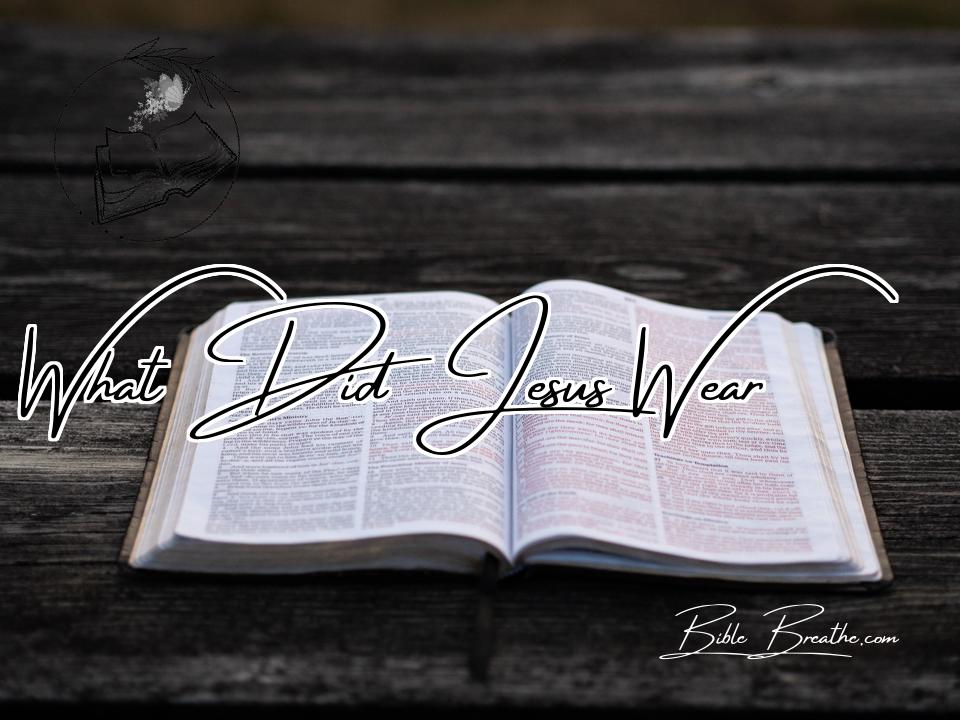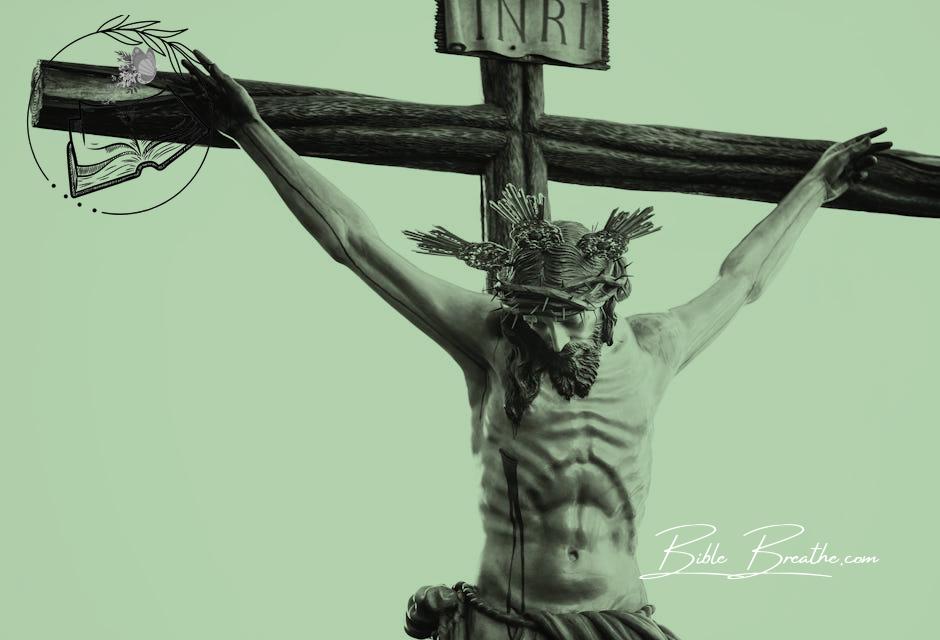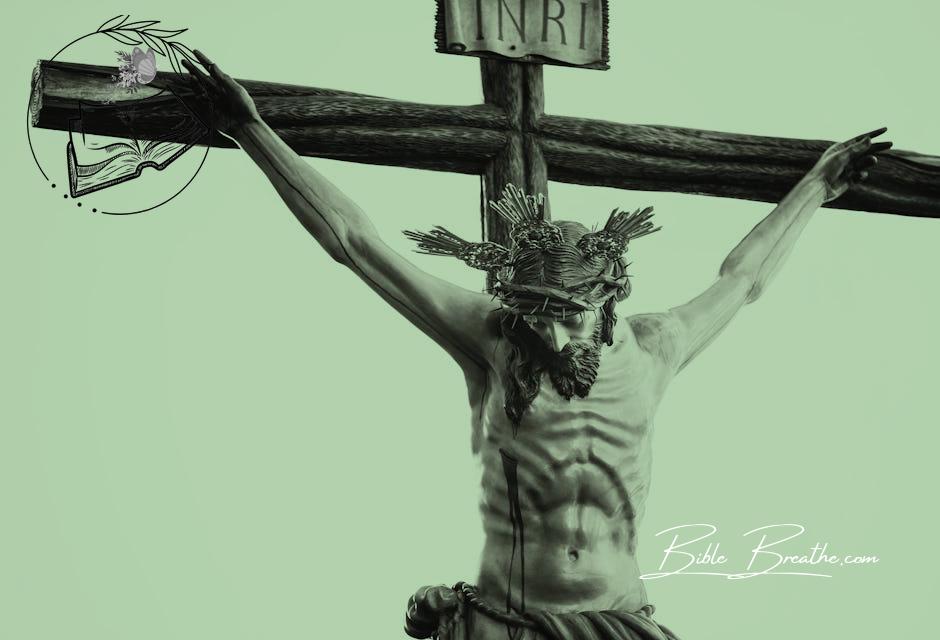Key Takeaways
- Jesus’ clothing would have been typical of a 1st-century Jewish peasant, consisting of a tunic, a belt, and sandals.
- The Bible mentions Jesus wearing a tunic, which was a simple garment made of woven fabric, often made of wool or linen (Matthew 10:10, Mark 6:9).
- Jesus’ tunic was likely a tallit, a traditional Jewish garment with tassels on the hem, as described in the Bible (Matthew 9:20, 14:36).
- He would have also worn a sash or belt around his waist, which was a common practice among Jewish men at the time (Matthew 3:4).
- Sandals were the typical footwear for ancient Jews, and Jesus would have worn them as well (Matthew 3:11, Mark 1:7).
- According to historical records, the robe that Jesus wore during his crucifixion was likely a sleeveless tunic, similar to those worn by ancient Greek and Roman citizens Traditional Greek Clothing.
Introduction
A Brief History of Jesus and the Significance of His Attire
Let’s talk about Jesus’ wardrobe.
It’s not just about what he wore, but also what it represents.
Jesus’ attire is a reflection of his humility, compassion, and connection to his roots.
Purpose of the Article
Have you ever wondered what Jesus wore?
We often imagine him in a long, flowing robe, but what’s the real story?
In this article, we’ll explore the history behind Jesus’ attire and what it means for us today.
| Item | Significance |
|---|---|
| Tunic | Represented his humility and connection to the common people |
| Robe | Symbolized his role as a prophet and teacher |
What can we learn from Jesus’ wardrobe?
Let’s dive in and find out!
Before we go any further, let’s take a look at this word cloud to see the big picture.
Word cloud by BibleBreathe.com about what did jesus wear
Jesus’ Clothing in the New Testament
Photo modified by BibleBreathe.com. Original photo by Alem Sánchez on Pexels
Description of Jesus’ Clothing in the Bible
So, what did Jesus wear?
We don’t have a detailed description of Jesus’ everyday clothes in the Bible, but we can make some educated guesses based on the culture and time period He lived in.
Jesus was a Jew, so He likely wore traditional Jewish clothing, which included a tunic (or robe) and a garment or coat.
The Bible does mention Jesus’ clothing in a few instances, like when He was tempted in the wilderness (Matthew 4:2-4, KJV) or when He was mocked by the soldiers before His crucifixion (Matthew 27:28, KJV).
| Instance | Description of Jesus’ Clothing |
|---|---|
| Temptation in the wilderness | No specific description, but likely wore traditional Jewish clothing. |
Different Interpretations of the Bible’s Descriptions
Some people might wonder, why does it matter what Jesus wore?
Well, understanding the cultural context of Jesus’ clothing can help us better understand the Bible and its teachings.
For example, when Jesus wore a tuft of blue on the hem of His garment (Numbers 15:37-41, KJV), it was a sign of obedience to God’s law.
Fancy clothes weren’t really Jesus’ style, though. He was more about humility and servanthood.
“For they that wear soft clothing are in kings’ houses.” (Matthew 11:8, KJV)
It’s interesting to note that Jesus’ clothing has been interpreted in different ways throughout history. Some see it as a symbol of His royal status, while others view it as a sign of His poverty and humility.
| Interpretation | Description |
|---|---|
| Royal status | Jesus’ clothing symbolized His royalty and divinity. |
Historical Context of Jesus’ Clothing
Clothing in Ancient Judea
Let’s talk about what people wore back in Jesus’ day.
In ancient Judea, clothing was pretty simple.
Tunics, robes, and sandals were the norm.
People didn’t have a lot of fancy clothes like we do today.
In fact, most people only had a few outfits that they wore over and over again.
| Type of Clothing | Description |
|---|---|
| Tunic | A simple, long-sleeved shirt made of linen or wool. |
| Robe | A longer, outer garment worn over the tunic. |
Comparison of Jesus’ Clothing to Other Figures in the Region
So, what did Jesus wear?
Well, as a carpenter and a rabbi, Jesus probably dressed pretty simply.
He might have worn a tunic and sandals, just like most other people in ancient Judea.
But, as a teacher and a leader, Jesus might have also worn a robe to signify his authority.
It’s interesting to compare Jesus’ clothing to other figures in the region.
For example, Roman soldiers wore pretty elaborate uniforms, complete with helmets and armor.
Jewish priests, on the other hand, wore fancy robes and headpieces to signify their role in the temple.
Jesus, however, didn’t need all that fancy stuff.
He was more concerned with spreading God’s message than with showing off his clothes.
“And Jesus said unto him, Foxes have holes, and birds of the air have nests; but the Son of man hath not where to lay his head.” (Matthew 8:20, KJV)
Theological Interpretations of Jesus’ Clothing
Photo modified by BibleBreathe.com. Original photo by Alem Sánchez on Pexels
The Significance of Jesus’ Clothing in Christian Theology
When we think about Jesus’ clothing, we might not immediately think about its theological significance. But, believe it or not, what Jesus wore is actually pretty important in Christian theology.
The Seamless Robe: Remember the story of Jesus’ crucifixion? The Roman soldiers cast lots for His seamless robe (John 19:23-24). This wasn’t just a random act – it’s actually a symbol of Jesus’ unity with God and humanity. Just like the robe was seamless, Jesus’ love and sacrifice are seamless, covering all of humanity.
The Wedding Garment: In Matthew 22:11-14, Jesus tells a parable about a wedding guest who shows up without a wedding garment. This garment represents the righteousness that comes from faith in Jesus. When we put on this garment, we’re symbolically putting on Jesus’ righteousness.
Different Christian Perspectives on Jesus’ Attire
Different Christian traditions have varying perspectives on Jesus’ clothing. Here are a few examples:
- Catholic Perspective: In Catholic tradition, Jesus’ clothing is often seen as a symbol of His divine nature. The Seamless Robe, for example, is seen as a representation of Jesus’ unity with God.
- Protestant Perspective: In Protestant tradition, Jesus’ clothing is often seen as a symbol of His humanity. The fact that He wore ordinary clothing like a tunic and sandals emphasizes His identification with humanity.
- Eastern Orthodox Perspective: In Eastern Orthodox tradition, Jesus’ clothing is often seen as a symbol of His royalty and divinity. The Seamless Robe is seen as a representation of Jesus’ kingship over all creation.
| Christian Tradition | Perspective on Jesus’ Clothing |
|---|---|
| Catholic | Symbol of Jesus’ divine nature |
| Protestant | Symbol of Jesus’ humanity |
As we explore the theological significance of Jesus’ clothing, we’re reminded that every detail of Jesus’ life and ministry has meaning and significance. Even something as simple as what He wore can teach us about His love, sacrifice, and unity with humanity.
Modern Depictions of Jesus’ Clothing
Analysis of Jesus’ Clothing in Art and Popular Culture
Let’s face it, when we think of Jesus, we often picture Him in a white robe with a crown of thorns. But is that really what He wore?
Art and popular culture have had a significant impact on how we visualize Jesus’ clothing. From Renaissance paintings to modern movies, we’ve seen Jesus depicted in various outfits. But how accurate are these depictions?
| Depiction | Description | Accuracy |
|---|---|---|
| White robe | A simple, flowing white robe, often with a gold trim. | Possible, but not historically confirmed. |
| Sandals | Simple leather sandals, often worn with a robe. | Likely, as sandals were common footwear in ancient times. |
Comparison of Modern Depictions to Historical and Theological Interpretations
So, what did Jesus really wear? The Bible doesn’t give us a detailed description, but we can make some educated guesses based on the culture and time period.
In ancient Israel, men typically wore a tunic made of wool or linen, often with a cloak or mantle over top. This would have been the typical attire for a Jewish man like Jesus.
But what about the modern depictions? While they might not be entirely accurate, they do serve a purpose. They help us visualize Jesus as a real person, rather than just a historical figure.
“And as they led him away, they laid hold upon one Simon, a Cyrenian, coming out of the country, and on him they laid the cross, that he might bear it after Jesus.” (Luke 23:26, KJV)
In this verse, we see that Jesus was forced to carry His own cross, wearing only a loincloth. This is a far cry from the elaborate robes often depicted in art and popular culture.
Ultimately, it’s not about what Jesus wore, but about who He is and what He did for us. But by exploring these modern depictions, we can gain a deeper understanding of the cultural and historical context in which Jesus lived.
Controversies and Debates Surrounding Jesus’ Clothing
Photo modified by BibleBreathe.com. Original photo by Pixabay on Pexels
Discussion of Debates and Controversies Surrounding Jesus’ Clothing
Let’s dive into some of the debates surrounding Jesus’ clothing.
You might be thinking, “What’s the big deal about what Jesus wore?” But, believe it or not, there are some pretty interesting discussions going on about this topic.
Some people argue that Jesus wore a traditional Jewish tunic, while others claim He wore a more Greek or Roman-style garment.
| Perspective | Argument |
|---|---|
| Traditional Jewish tunic | Jesus was a Jewish rabbi, so it’s likely He wore traditional Jewish clothing. |
Examination of Different Perspectives and Arguments
So, what can we learn from these different perspectives?
Here are a few things to consider:
- Cultural context matters: Jesus’ clothing would have been influenced by the cultural context He lived in. This can help us better understand the world He lived in.
- Symbolism is important: The type of clothing Jesus wore might have held symbolic meaning. For example, a traditional Jewish tunic might have represented His connection to the Jewish faith.
- We can’t know for sure: Let’s be real, we can’t know exactly what Jesus wore. But, exploring these different perspectives can help us deepen our understanding of His life and teachings.
“And they stripped him, and put on him a scarlet robe.” (Matthew 27:28, KJV)
As we explore these debates, let’s remember that Jesus’ clothing is just a small part of the bigger picture. What’s most important is the message He came to share with us.
Scholarly Research on Jesus’ Clothing
Overview of Scholarly Research on Jesus’ Clothing
Let’s dive into the world of biblical archaeology and historical research to see what scholars have discovered about Jesus’ clothing.
Scholars have been studying the clothing of ancient civilizations, including the Israelites, to get a better understanding of what Jesus might have worn.
Here are some key findings:
- Tunics and cloaks: Jesus likely wore a simple tunic made of linen or wool, along with a cloak or mantle to keep warm.
- Sands and footwear: Jesus probably wore sandals or sabıoted feet, which were common in ancient Israel.
- Head coverings: Some scholars believe Jesus might have worn a head covering, such as a phylactery or a kippah, to show respect for God.
Analysis of Key Findings and Debates in the Field
Now, let’s take a closer look at some of the debates and discussions among scholars about Jesus’ clothing.
| Debate | Scholarly Perspective |
|---|---|
| What color was Jesus’ tunic? | Some scholars believe Jesus’ tunic was likely white or off-white, while others argue it could have been blue or brown. |
| Did Jesus wear a sash or belt? | Some scholars think Jesus might have worn a sash or belt to cinch his tunic, while others argue there’s no evidence for this. |
“And the coat was without seam, woven from the top throughout.” (John 19:23, KJV)
Some famous scholars, like John Walton, have weighed in on these debates, offering insights from their research.
- Walton notes that Jesus’ clothing would have been simple and practical, reflecting his humble background and ministry.
By exploring these scholarly debates and findings, we can gain a deeper understanding of what Jesus might have worn, and what that means for our faith today.
Frequently Asked Questions About What Did Jesus Wear
What is the significance of clothing in the Bible?
In the Bible, clothing often symbolizes spiritual conditions, such as righteousness, purity, or humility. It can also represent a person’s identity, status, or occupation. Additionally, clothing is used to convey moral and spiritual messages, like modesty, honor, and sacrificial love. Overall, clothing serves as a reflection of one’s inner character and relationship with God.
What Are Some Historical Accounts of Jesus’ Clothing?
Historical accounts of Jesus’ clothing are scarce, but clues can be found in ancient texts and art. The Shroud of Turin, believed by some to be Jesus’ burial cloth, shows a linen cloth with a imprint of a bearded man. Early Christian art depicts Jesus in a tunic and mantle, similar to traditional Jewish attire. Pliny the Younger’s writings describe a typical 1st-century Jewish tunic as ‘a simple, loose-fitting garment.’
How Has the Depiction of Jesus’ Clothing Changed Over Time?
The depiction of Jesus’ clothing has evolved significantly over time, influenced by cultural and artistic trends. In early Christian art, Jesus wore a tunic and cloak, symbolizing his divinity. During the Middle Ages, he was often depicted in ornate, regal attire. In the Renaissance, artists emphasized realism, showing Jesus in simpler, more humble clothing. Modern depictions often feature a traditional white robe, solidifying his iconic image.
{
“@context”: “https://schema.org”,
“@type”: “FAQPage”,
“mainEntity”: [
{
“@type”: “Question”,
“name”: “What is the significance of clothing in the Bible?”,
“acceptedAnswer”: {
“@type”: “Answer”,
“text”: “In the Bible, clothing often symbolizes spiritual conditions, such as righteousness, purity, or humility. It can also represent a person’s identity, status, or occupation. Additionally, clothing is used to convey moral and spiritual messages, like modesty, honor, and sacrificial love. Overall, clothing serves as a reflection of one’s inner character and relationship with God.”
}
},
{
“@type”: “Question”,
“name”: “What Are Some Historical Accounts of Jesus’ Clothing?”,
“acceptedAnswer”: {
“@type”: “Answer”,
“text”: “Historical accounts of Jesus’ clothing are scarce, but clues can be found in ancient texts and art. The Shroud of Turin, believed by some to be Jesus’ burial cloth, shows a linen cloth with a imprint of a bearded man. Early Christian art depicts Jesus in a tunic and mantle, similar to traditional Jewish attire. Pliny the Younger’s writings describe a typical 1st-century Jewish tunic as ‘a simple, loose-fitting garment.'”
}
},
{
“@type”: “Question”,
“name”: “How Has the Depiction of Jesus’ Clothing Changed Over Time?”,
“acceptedAnswer”: {
“@type”: “Answer”,
“text”: “The depiction of Jesus’ clothing has evolved significantly over time, influenced by cultural and artistic trends. In early Christian art, Jesus wore a tunic and cloak, symbolizing his divinity. During the Middle Ages, he was often depicted in ornate, regal attire. In the Renaissance, artists emphasized realism, showing Jesus in simpler, more humble clothing. Modern depictions often feature a traditional white robe, solidifying his iconic image.”
}
}
]
}





